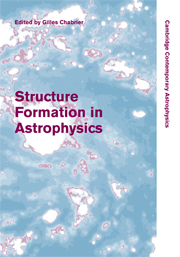Book contents
- Frontmatter
- Contents
- List of contributors
- Preface
- Part I Physical Processes and Numerical Methods Common to Structure Formations in Astrophysics
- Part II Structure and Star Formation in the Primordial Universe
- Part III Contemporary Star and Brown Dwarf Formation
- 9 Diffuse interstellar medium and the formation of molecular clouds
- 10 The formation of distributed and clustered stars in molecular clouds
- 11 The formation and evolution of prestellar cores
- 12 Models for the formation of massive stars
- Part IV Protoplanetary Disks and Planet Formation
- Part V Summary
12 - Models for the formation of massive stars
Published online by Cambridge University Press: 11 August 2009
- Frontmatter
- Contents
- List of contributors
- Preface
- Part I Physical Processes and Numerical Methods Common to Structure Formations in Astrophysics
- Part II Structure and Star Formation in the Primordial Universe
- Part III Contemporary Star and Brown Dwarf Formation
- 9 Diffuse interstellar medium and the formation of molecular clouds
- 10 The formation of distributed and clustered stars in molecular clouds
- 11 The formation and evolution of prestellar cores
- 12 Models for the formation of massive stars
- Part IV Protoplanetary Disks and Planet Formation
- Part V Summary
Summary
Abstract
The formation of massive stars is currently an unsolved problem in astrophysics. Understanding the formation of massive stars is essential because they dominate the luminous, kinematic and chemical output of stars. Furthermore, their feedback is likely to play a dominant role in the evolution of molecular clouds and any subsequent star formation therein. Although significant progress has been made observationally and theoretically, we still do not have a consensus as to how massive stars form. There are two contending models to explain the formation of massive stars: core accretion and competitive accretion. They differ primarily in how and when the mass that ultimately makes up the massive star is gathered. In the core accretion model, the mass is gathered in a pre-stellar stage due to the overlying pressure of a stellar cluster or a massive pre-cluster cloud clump. In contrast, competitive accretion envisions that the mass is gathered during the star formation process itself, being funnelled to the centre of a stellar cluster by the gravitational potential of the stellar cluster. Although these differences may not appear overly significant, they involve significant differences in terms of the physical processes involved. Furthermore, the differences also have important implications in terms of the evolutionary phases of massive star formation and ultimately that of stellar clusters and star formation on larger scales. Here, we review the dominant models and discuss prospects for developing a better understanding of massive star formation in the future.
- Type
- Chapter
- Information
- Structure Formation in Astrophysics , pp. 288 - 320Publisher: Cambridge University PressPrint publication year: 2009
- 16
- Cited by



